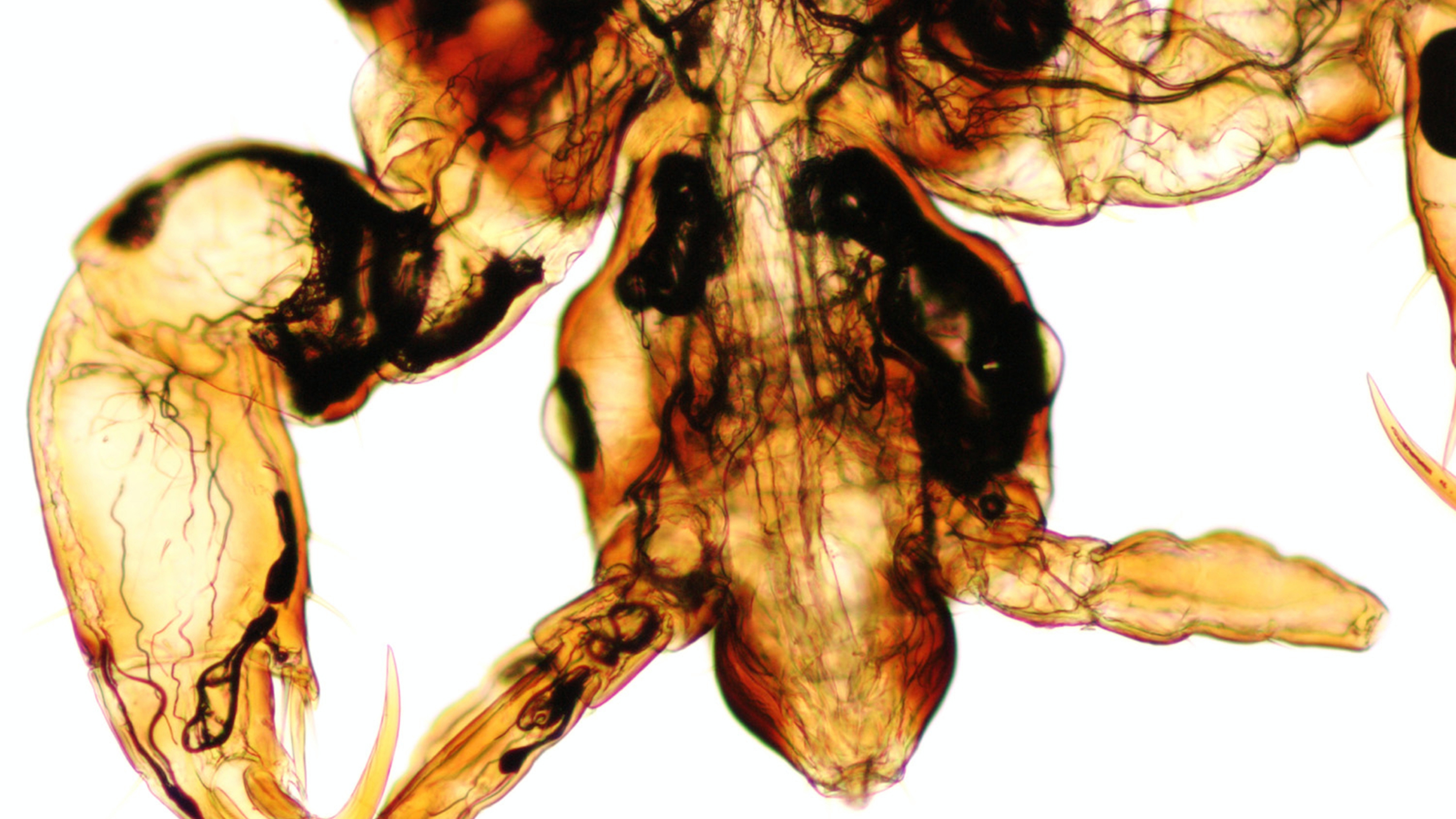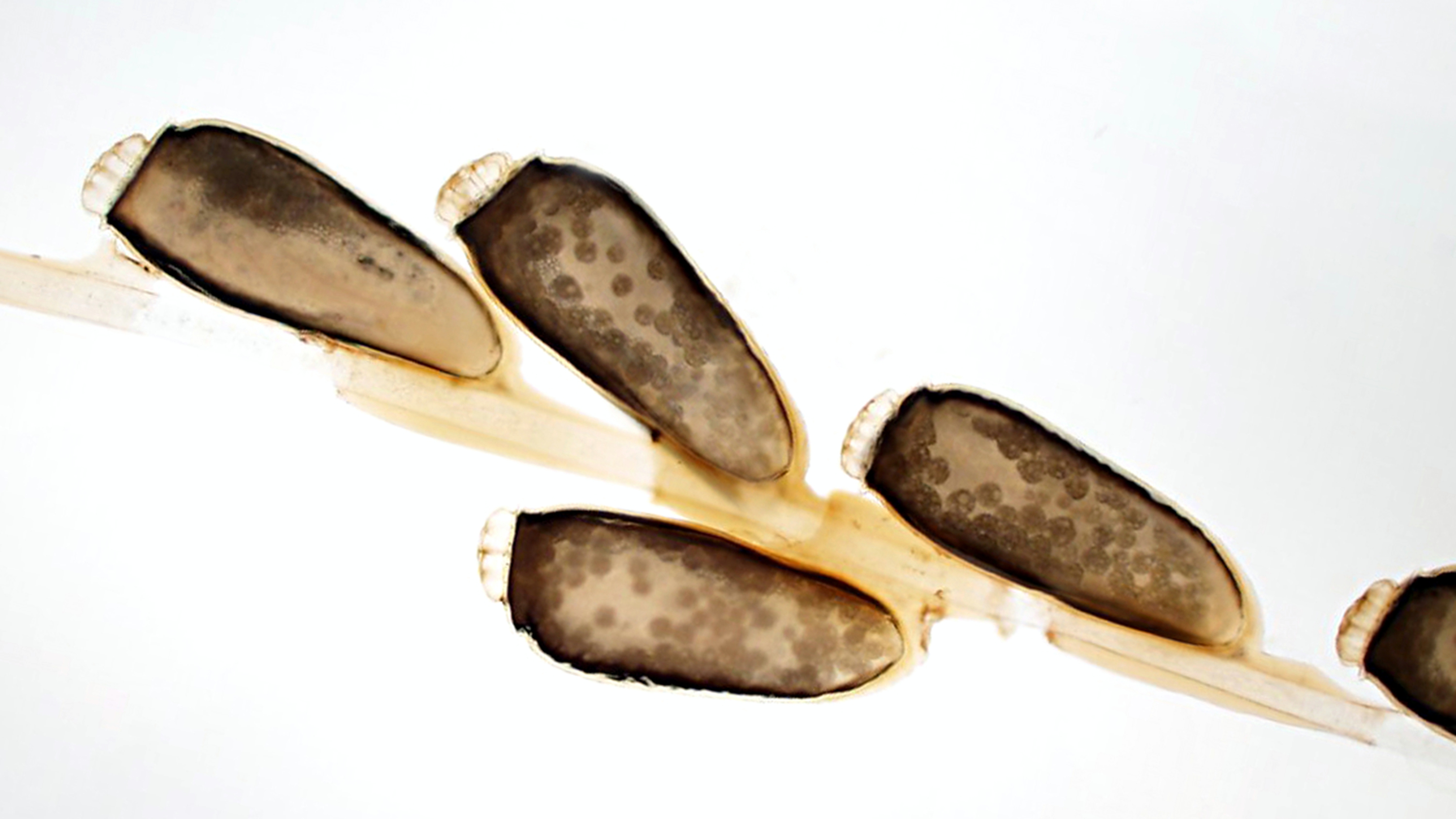-
Pretty Parasites With Dr. Pritt, part 2: Scalp explorers
Parasites can be pretty: pretty cute, pretty awesome and sometimes pretty creepy. This article is part two of a five-part series featuring some of Dr. Bobbi Pritt's "freaky favorites," ranked from 1 (not too scary) to 5 (bad-news bugs).
Freaky factor 2/5: Sure, they crawl around on your head sucking your blood, but they’re somewhat easy to get rid of. Plus, they’re pretty cool to look at.

Lice are tiny insects, smaller than a grain of rice and barely visible without a microscope. Unlike most parasites, they live on the outside of the body — usually on people’s heads. They spend their entire lives there, feeding on blood, mating and laying eggs called nits.

Lice are well-adapted for living on our scalps. They have special crablike claws that help them hold onto strands of hair. When lice lay eggs, the nits stick to hair using glue that makes them difficult to remove.
Lice are common worldwide and usually infect children, especially in schools and other crowded places.
People can have good hygiene and still get lice. They’re spread through close personal contact and by sharing belongings, such as hats and combs.
Signs of lice include intense itching or a tickling feeling in your hair. You also may be able to see adult lice or eggs, although eggs sometimes can look like dandruff, as shown in this image.  To get rid of lice, use a medicated shampoo, and carefully comb your hair to remove eggs and adult lice.
To get rid of lice, use a medicated shampoo, and carefully comb your hair to remove eggs and adult lice.
Related articles:
- Pretty Parasites With Dr. Pritt, part 1: The skinny on Ascaris worms
- Pretty Parasites With Dr. Pritt, part 3: ‘Beaver fever’ creature feature
- Pretty Parasites With Dr. Pritt, part 4: Love bugs
- Pretty Parasites With Dr. Pritt, part 5: Bad-news bugs
Bobbi Pritt, M.D., is a pathologist and microbiologist at Mayo Clinic. She loves learning about parasites. You can read her blog, "Creepy Dreadful Wonderful Parasites" and follow @ParasiteGal.

Related Articles







